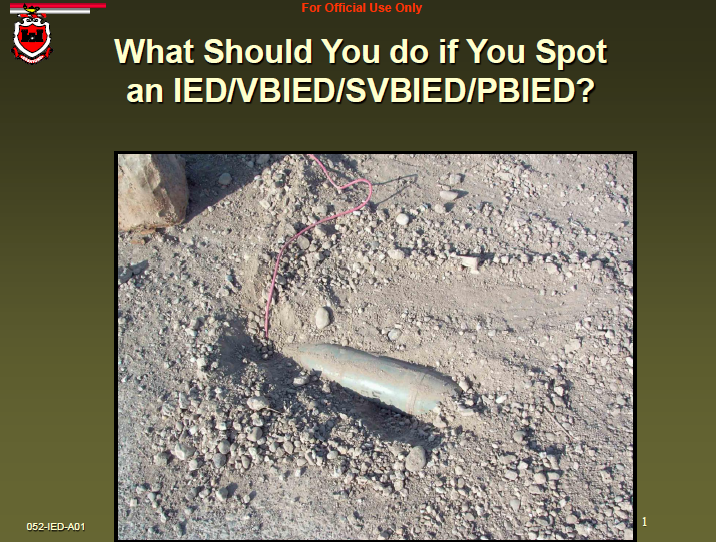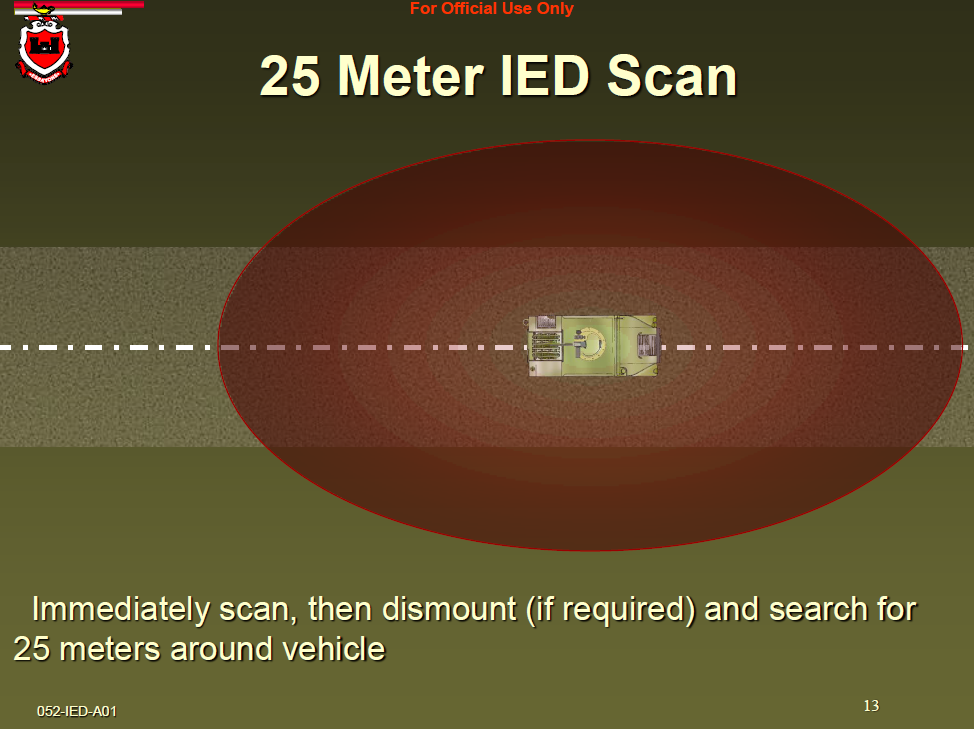 U.S. Army Corps of Engineers
U.S. Army Corps of Engineers
- 36 pages
- For Official Use Only
- August 25, 2005
Reacting to an IED while Vehicle Mounted
• Alert the vehicle commander and elements of the convoy of the possible IED/VBIED and its location using the 3 Ds (distance, direction, description).
• If stopping the vehicle puts it within the estimated casualty radius of the possible IED/VBIED, the driver should speed up and quickly move through the danger area to a tactically safe position and distance (the minimum safe distance is dependent on the mission, enemy, terrain and weather, troops and support available, time available, and civil considerations [METT-TC] factors).
• If it is possible to stop the vehicle before getting within the
estimated casualty radius of the IED/VBIED, the driver should
be prepared to immediately back away from the possible
IED/VBIED and place the vehicle in a tactically safe position
and distance or as leadership directs (the minimum safe
distance is dependent on METT-TC factors).…
• Establish security, and scan for possible secondary
IEDs/VBIEDs using the 5/25 meter checks.• Report the possible static IED/VBIED and any
secondary suspected IEDs/VBIEDs to the patrol
leadership using the EH spot report.• Immediately scan the area for signs of enemy
activity (such as an impending ambush, a
triggerman, a cameraman, or a sniper). IEDs/VBIEDs
are often used to initiate complex attacks.• Follow the vehicle commander’s directions, and do
not use radio communications equipment within
300 meters of the suspected IED/VBIED.…
9-Line Explosive Hazard (EH) Spot Report
Line 1: Date time group discovered: (Command policy will dictate Local or Zulu
time)
Line 2: Reporting activity: (UIC / Unit Designation), Location (8-digit grid –
Include landmarks and reference points)
Line 3: Contact Method: (Radio Freq / Call Sign or Telephone number If using
telephone number provide point of contact)
Line 4: Type of Munition: (Dropped, Projected, Placed or Thrown)
Line 5: NBC Contamination: Yes or No, known or suspected NBC
contamination. If Yes, report type of agent if known / identified.
Line 6: Resource Threatened: (What resource is threatened – is it a critical
asset?)
Line 7: Impact on Mission: (How the UXO is affecting the mission)
Line 8: Protective Measures Taken: (Unit emplaced protective measures)
Line 9: Recommended Priority: (Immediate, Indirect, Minor, or No Threat).…



